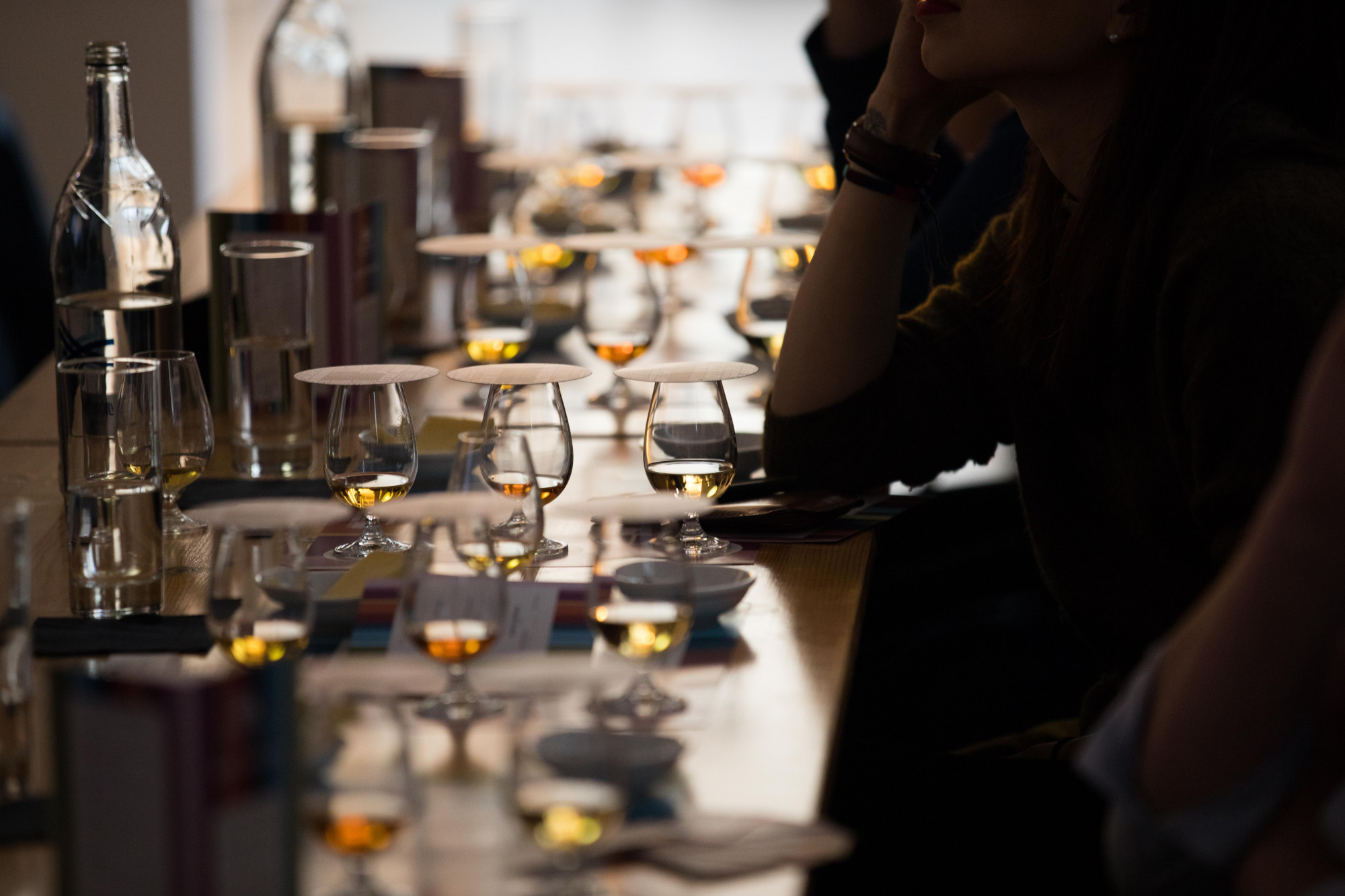As members we know that we’re in great hands with The Scotch Malt Whisky Society’s expert tasting panel when it comes to bottling our rare single casks. The assessment of whisky is a tough job, but somebody has to do it!
But what comes after panel approval is the bottling of the cask, the release of the cask to members, and then the all-important tasting of that whisky. For many members, tasting that whisky is done at our all-inclusive and exciting whisky tasting experiences for members and guests to appreciate. However, not all of our members get to the tastings depending on time, place, and circumstance. That’s where enjoying our panel-approved casks at home comes in, and even better when sharing them with friends who appreciate full-flavoured experiences like our casks offer.
I’m lucky to have some incredible friends who don’t mind coming over and drinking my whisky, so in this instance I’d like to invite you to join me in my proverbial living room to share what a typical evening assessing whisky looks like, in these four easy steps:
1. Preparations – Supplies
The neighbours are coming over, so let’s break out the good glassware! I find our official crystal Society tulips (or birdies, as I sometimes call them) work best. They are most similar to a small, six ounce white wine glass. When hosting a comparative tasting “flight” or indulging in more than one cask, ordering your whisky is key. The Scotch Malt Whisky Society’s proprietary twelve flavour profiles are coincidentally arranged from happy hour to nightcap, and work as a great chart to follow; from young & spritely to heavily peated. If you must however, you can break all the rules so long as you remember just one: save the peat for last!
Here’s the list of supplies you’ll need for your tasting session, aside from your whisky:
• Tasting Notes Notebook
• Glassware
• Friends! (When in doubt, even a virtual tasting will do.)
• Water dropper / carafe
• Spittoon (Optional of course, but when assessing many spirits professionally, its important to please drink responsibly.)
• Nibbles (My favourites being hard cheeses and dark chocolate)
2. Look – Assess the Appearance
Take a long hard look before you’re quick to fall in love. What colour is the whisky? Is it opaque? The look of whisky in your glass can tell you a lot about its production. For instance, it can allude to the whisky’s filtration or even proof. That said, with Society whisky everything is bottled unadulterated at varying cask strengths, and non-chill filtered. Whisky intended for assessment is best served at room temperature. For my fellow wine-lovers: please don’t vigorously swirl your whisky! This is especially important for whisky at cask strength. We’re about to embrace the olfactory system and we wouldn’t want to burn our nose hairs off…
3. Smell – Take in the Aroma
In through your nose, out through your mouth… We’re talking deep meditative breaths here, people! Walk the glass up from your waistline towards your nose until you can first smell it. When you can, stop and hold the glass right there. There’s no need to deep-dive your glass with your nose, especially whisky bottled at cask strength. Of all the assessments of aroma I have learned, I find spirits expert and authority, F. Paul Pacult’s, to be the one that resonates best. While sniffing (and also tasting), these are the categories Mr. Pacult defined that are great for assessment:
• Flowers: roses, violet, carnation, jasmine, honeysuckle
• Nuts: almond, peanut, hazelnut
• Baking spice: cinnamon, vanilla, nutmeg, clove, allspice
• Cooking spice: black pepper, cayenne, sage, thyme, parsley, rosemary, basil
• Fruits: orchard fruits, berries, citrus, tropical
4. Taste – Understanding Flavor (Otherwise Known as “The Fun Part”)
Take a small sip and hold on your tongue, allowing the flavor to sit there and bounce around what some refer to as the “cathedral” of the mouth. At this point, you may either swallow or spit, the choice is yours! But what you must do is take two sips. The first sip will be just a handshake with the whisky; the second will get you more acquainted. At this point with our cask strength Society whisky, I usually add a little water and repeat steps 2, 3 and 4! There you have it! In four easy steps you are now ready to taste like the connoisseur you are. When tasting, it’s okay to make associations with distillery styles and terroir that we’re used to. The delicateness of sherry casks, lesser peatiness of older Islays, vanilla and pear of Speyside, savory aspects of coastal influence – just to name a few common ones. Yet when tasting single casks, as we deal exclusively with within the Society, it’s sometimes a surprising experience, often breaking traditional barriers of house style and geographical influences. During assessment, set your ideals aside of the styles we have come to know from well-loved distilleries, as well as well-known regions. Focus foremost on the whisky’s flavor – the liquid inside the glass – to best assess the rare spirit, as it deserves.
5. Time – Take your time!
Something I’ve ranted about before on WhiskyWise is the ‘no rush’ approach to tasting and appreciating single cask whisky. There’s no need to rush, and quality over quantity is a wise approach here.
There you have it! The 5 steps to hosting your own whisky tasting at home and making the most of the experience!
Slainte!
Authored by Matt Bailey & Amanda Victoria (USA)








